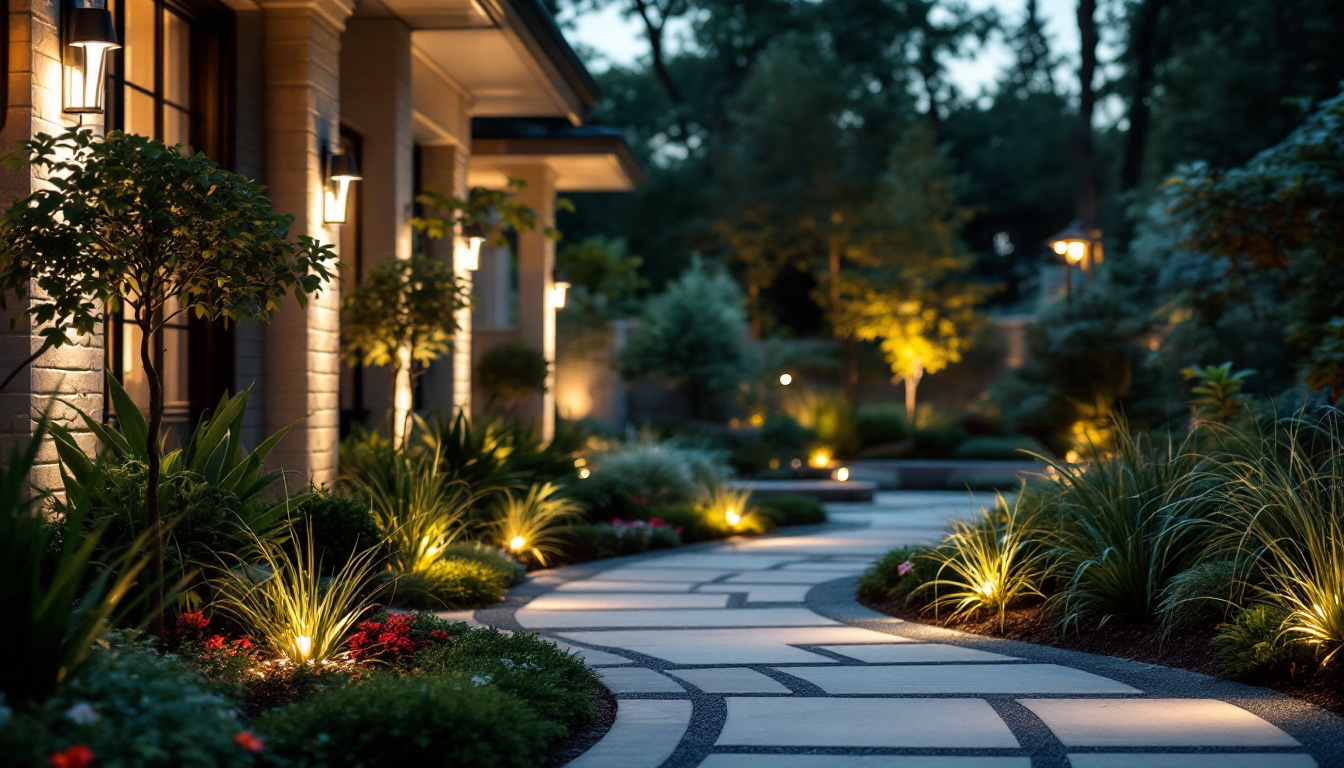
Light Emitting Diodes (LEDs) have revolutionized the lighting industry with their remarkable efficiency and longevity. Unlike traditional incandescent or fluorescent bulbs, LEDs convert a higher percentage of energy into light, making them a more sustainable choice for both residential and commercial applications. This transformation not only reduces energy consumption but also significantly lowers electricity bills, a crucial consideration for contractors and clients alike.
As energy efficiency becomes a priority in construction and renovation projects, understanding where to buy LEDs and how they impact energy consumption is essential. Lighting contractors must stay informed about the latest advancements in LED technology and the best sources for procurement to ensure they are providing the best solutions to their clients. Furthermore, with the growing emphasis on sustainability, many manufacturers are now focusing on eco-friendly production processes, which adds another layer of appeal to LEDs. By choosing these products, contractors can align their projects with environmentally responsible practices, enhancing their reputation in an increasingly eco-conscious market.
The advantages of LEDs extend beyond mere energy savings. They boast a longer lifespan, often lasting up to 25,000 hours or more, which translates to fewer replacements and reduced maintenance costs. Additionally, LEDs emit less heat than traditional bulbs, contributing to a cooler environment and further energy savings on air conditioning. This characteristic is particularly beneficial in commercial settings, where large-scale lighting can significantly impact overall temperature control and energy expenditure.
Moreover, the versatility of LEDs allows for a wide range of applications, from residential lighting to complex commercial installations. Their ability to be dimmed and controlled via smart technology enhances their appeal, making them a preferred choice for modern lighting designs. With advancements in color temperature and brightness options, LEDs can now mimic the warm glow of incandescent bulbs or provide bright daylight-like illumination, catering to various aesthetic preferences and functional needs. This adaptability not only enhances the ambiance of spaces but also allows designers to create innovative lighting solutions that can transform environments, whether in homes, offices, or public spaces.
Finding the right supplier for LEDs is crucial for contractors looking to provide their clients with high-quality products. There are several avenues to explore when sourcing LEDs, each with its advantages and considerations.
Local electrical supply stores often carry a variety of LED products suitable for different applications. These stores provide the benefit of immediate availability, allowing contractors to pick up supplies as needed without waiting for shipping. Additionally, local suppliers can offer personalized service, helping contractors select the right products for their specific projects.
Moreover, many local stores have knowledgeable staff who can provide insights into the latest LED technologies and trends. This can be invaluable for contractors who want to stay ahead of the curve and offer their clients the best options available. Furthermore, local stores may host workshops or training sessions that keep contractors informed about new lighting solutions and installation techniques, fostering a community of professionals who can share their experiences and best practices.
Online retailers have become a popular choice for purchasing LEDs due to their convenience and often competitive pricing. Websites dedicated to lighting products typically offer a vast selection, allowing contractors to compare different brands and specifications easily. This can be particularly beneficial for larger projects where bulk purchasing is necessary.
However, when buying online, it’s essential to consider the reputation of the retailer. Reading customer reviews and checking for warranties can help ensure that the products meet quality standards. Additionally, shipping times and costs should be factored into the overall budget and timeline of the project. Many online retailers also provide detailed product descriptions and specifications, enabling contractors to make informed decisions without the need for in-person consultations. Some even offer virtual consultations or chat support, allowing contractors to ask questions and clarify doubts before making a purchase.
For contractors involved in larger projects or those looking to stock up on supplies, wholesale distributors can be an excellent source for LEDs. These distributors often provide significant discounts for bulk purchases, making them a cost-effective option for contractors working on multiple projects simultaneously.
Establishing a relationship with a wholesale distributor can also lead to additional benefits, such as access to exclusive products, promotional offers, and technical support. This partnership can enhance a contractor’s ability to deliver high-quality lighting solutions to their clients. Additionally, many wholesale distributors have dedicated account managers who can assist with project planning and logistics, ensuring that contractors have the right products on hand when they need them. This can be particularly advantageous for projects with tight deadlines or specific lighting requirements, as having a reliable source of materials can streamline the entire process.
When sourcing LEDs, it is crucial to evaluate the quality of the products being purchased. Not all LEDs are created equal, and choosing inferior products can lead to subpar performance and dissatisfied clients.
One of the key factors to consider when evaluating LED quality is the relationship between lumens and watts. Lumens measure the amount of light emitted by a bulb, while watts measure the energy consumed. A high lumen output with low wattage indicates an efficient LED. Contractors should look for products that provide a good balance between these two metrics to ensure optimal performance and energy savings.
Additionally, understanding the color temperature of LEDs, measured in Kelvin, is essential for achieving the desired ambiance in a space. Warmer temperatures (around 2700K) are suitable for residential settings, while cooler temperatures (5000K and above) are often preferred for commercial environments.
Another critical aspect of LED quality is certification. Look for products that have been certified by recognized organizations, such as the Energy Star program or the Lighting Facts label. These certifications indicate that the products meet specific performance and efficiency standards, providing assurance of their quality.
Contractors should also be aware of the importance of warranties. A longer warranty period can indicate a manufacturer’s confidence in their product’s durability and performance. This can be a significant selling point to clients who may be hesitant to invest in new lighting technology.
The transition to LED lighting has profound implications for energy efficiency across various sectors. As more contractors and clients embrace this technology, the cumulative impact on energy consumption can be substantial.
In residential settings, the adoption of LEDs can lead to significant energy savings. Homeowners can reduce their lighting energy consumption by up to 75% compared to traditional incandescent bulbs. This reduction not only lowers monthly utility bills but also contributes to a more sustainable living environment.
Furthermore, as energy-efficient lighting becomes more commonplace, the demand for electricity decreases, which can lead to lower overall energy costs in the community. This ripple effect highlights the importance of contractors in promoting LED adoption among homeowners.
In commercial and industrial settings, the impact of LEDs is even more pronounced. Businesses can achieve substantial cost savings through reduced energy consumption and lower maintenance expenses. For instance, in large warehouses or office buildings, switching to LED lighting can lead to thousands of dollars in savings annually.
Moreover, energy-efficient lighting can enhance workplace productivity. Studies have shown that well-lit environments improve employee morale and focus, leading to better performance. This aspect can be a compelling selling point for contractors when discussing lighting solutions with potential commercial clients.
The LED industry is continually evolving, with new technologies and innovations emerging regularly. Staying informed about these trends can help contractors remain competitive and provide cutting-edge solutions to their clients.
One of the most significant trends in LED technology is the rise of smart lighting solutions. These systems allow for greater control over lighting through mobile apps or integrated building management systems. Features such as dimming, color changing, and scheduling can enhance the user experience and improve energy efficiency.
Contractors who embrace smart lighting technology can offer their clients advanced solutions that not only save energy but also provide convenience and flexibility. As smart home technology continues to gain traction, integrating LED lighting into these systems will become increasingly important.
Another trend in LED technology is the improvement in color rendering capabilities. High Color Rendering Index (CRI) LEDs can reproduce colors more accurately, making them ideal for applications where color perception is critical, such as in art galleries or retail spaces.
As manufacturers continue to enhance the color rendering capabilities of LEDs, contractors will be able to provide clients with lighting solutions that meet specific aesthetic and functional needs. This advancement can be a significant differentiator in a competitive market.
The transition to LED lighting represents a significant opportunity for contractors to enhance energy efficiency in various applications. Understanding where to buy LEDs, evaluating their quality, and staying informed about industry trends are essential for providing clients with the best solutions.
As the demand for energy-efficient lighting continues to grow, contractors who prioritize LED technology will not only benefit their clients but also contribute to a more sustainable future. By embracing this innovative lighting solution, contractors can position themselves as leaders in the industry and drive positive change in energy consumption practices.
Ready to elevate your projects with superior LED lighting solutions? Look no further than LumenWholesale, where we specialize in providing contractors with high-quality, spec-grade lighting products at unbeatable wholesale prices. Say goodbye to middleman markups and hello to a vast selection of industry-standard lighting that promises reliability and high performance. With the added convenience of free shipping on bulk orders, LumenWholesale ensures you get the premium lighting you need at the best value — no hidden fees, no compromises. Make the smart choice for your energy-efficient lighting needs and experience the best in wholesale lighting today.

Discover the science behind LED dock lights and why they’re essential for lighting contractors.

Discover the essential checklist for lighting contractors focusing on outdoor LED lights.

Discover how the standard bulb base is revolutionizing the lighting industry, offering unparalleled convenience and efficiency for contractors.

Discover how the best garage LED lights can revolutionize efficiency for lighting contractors.